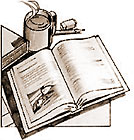
Atlas F1 Columnist
EDDIE JORDAN: THE BIOGRAPHY
By Timothy Collings.
Published by Virgin Books.
Eddie Jordan will probably go down in history as the last 'privateer' to enjoy any significant degree of success in the present manufacturer-driven era of Formula One. This alone makes Eddie a worthy figure of study, and his well-worn reputation for being colourful, individual, and occasionally, playfully controversial should make for good reading. So why was this book so disappointing?
Part of it, I think, is timing. The commercial value of getting a book out in time for the shopping season is obvious. Sometimes though, it can come at a cost, and this is one of those occasions. The Jordan team have had a rocky year in 2002, and some of the most significant changes in the team - the engine change for 2003, the changes to the driver line-up, the loss of a major sponsor, the impact of the changes to F1 upon a smaller team such as this one -- are all passed over without remark.
Very little of this stuff came out of the blue, and had the emphasis been upon the quality of the book rather than the importance of getting it out before Christmas, one would hope that the author would have seen these circumstances unfolding, waited, and then incorporated them into the book. In fairness to Timothy Collings, the blame for this would lay more at the publisher's feet than his, but the end result is a story that seems to leave the reader hanging.
The mass retrenchments that occurred mid-season are dealt with in reasonable detail, and reference to Takuma Sato's belatedly good result at Japan reinforce how late the final touches were added to the book, but they also highlight just how much is left unresolved. For example, Collings refers to Jordan's claims in Japan that Sato was a future World Champion (and acknowledges that the remarks should be taken with a grain of salt), but does not address the seemingly contradictory fact that the Japanese driver's seat was very much in doubt for 2003.
Collings seems to have had minimal co-operation from Jordan in preparing this book there is the odd quote here and there, and there is certainly evidence of one or two interviews. This is not always a bad thing - too much input from the subject sometimes does little more than ensure that the reader gets a flattering account of the person's life and times.
What makes all the difference is how the author goes about plugging the gap, and in this case I'm not convinced that Collings really nailed it. For one thing, there was far, far too much emphasis upon work previously published by other people. While never particularly desirable, drawing heavily upon the work of others is understandable to a degree if, for example, one was writing about a driver from the 1920s. But it really shouldn't be necessary for a current high-profile figure, particularly if you have been on the scene as long as Collings has and, in theory, have developed a stockpile of material, interviews, and anecdotes.
The other, more obvious problem is that in relying heavily upon material as widely available as that used by Collings (eg F1 Racing magazine, Autosport etc), one is reduced to simply regurgitating vast slabs of text that the reader has quite possibly already read. The book also lacks a 'voice of authority'.
Observations throughout 'Eddie Jordan: The Biography' are frequently prefaced with 'it seems', or 'probably'. If the author doesn't feel confident in making firm statements, then how does s/he go about getting the confidence of the reader?
While there was not much input from Eddie himself, Collings did make the effort to chat to a few people within the inner circle. Again though, the selection of informants was a little hit and miss. Some, such as Gary Anderson, were quite interesting, but others, such as the wine-fuelled gathering of current and former Jordan PR people in the F1 paddock, really did nothing to develop the reader's understanding of Eddie as a person. (Rule One of any kind of journalism if you really want to know the truth about something, the last person you ask is the PR rep!)
Ultimately, the book feels as if it lacks a general sense of purpose. Too many interviews and other means of investigation (such as the visit to Jordan's school) lead nowhere, leaving the reader feeling as if they are forever swimming around at the edges without ever really diving into the deep end.
The obligatory photo gallery is present in the middle of the book, and again offers little to nothing of any interest (in fact, there doesn't seem to be anything there that pre-dates 1996).
Die-hard Irish fans might find something to enjoy in this book, particularly because the Irish angle is played up well beyond the point of overkill. But otherwise, there is little in this book to get excited about, and little potential for enlightenment for anyone who is reasonably up to speed with the ins and outs of present-day Formula One and its main players.
Please Contact Us for permission to republish this or any other material from Atlas F1.
|
Click here to purchase this book from the Atlas F1 Bookstore
Volume 8, Issue 51
Articles
The White Tornado
Da Matta's Big Move
2002 SuperStats: Winter Testing
Columns
Rear View Mirror
Bookworm Critique
Elsewhere in Racing
The Grapevine
> Homepage |

